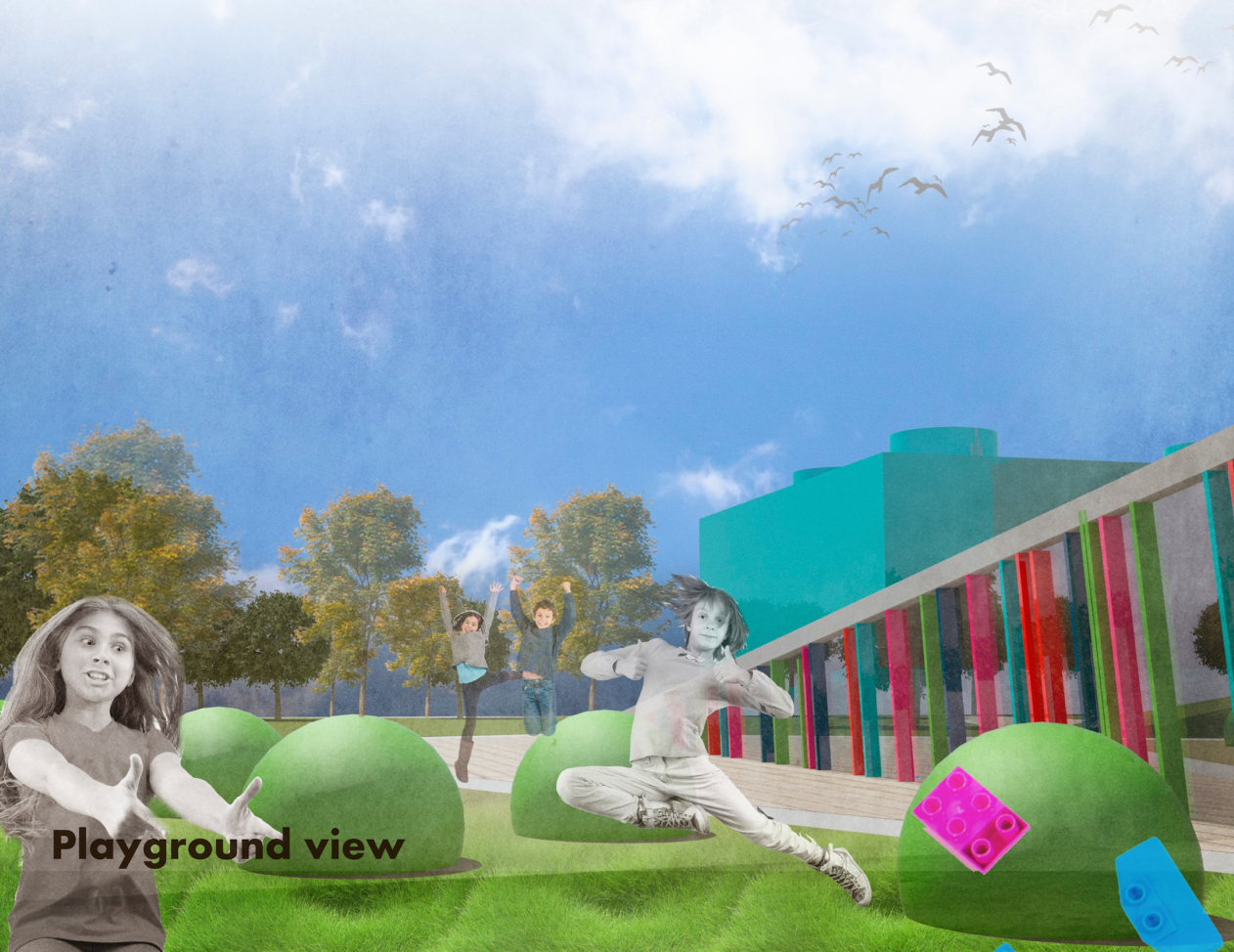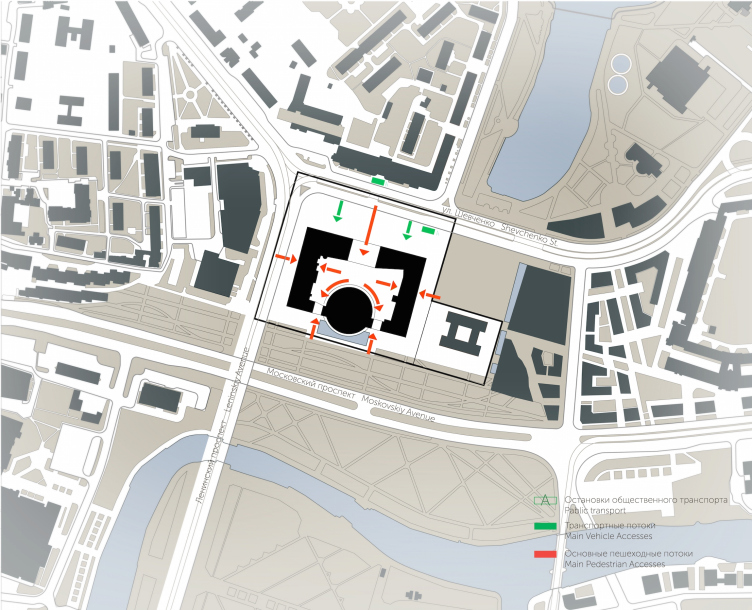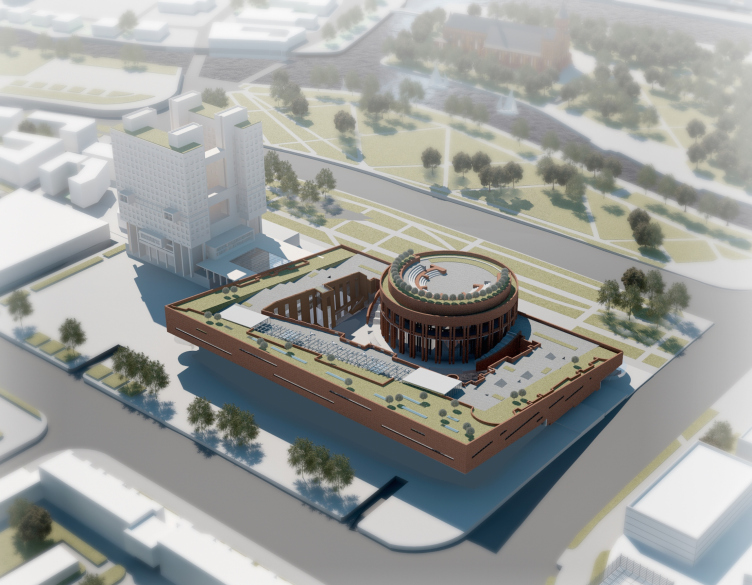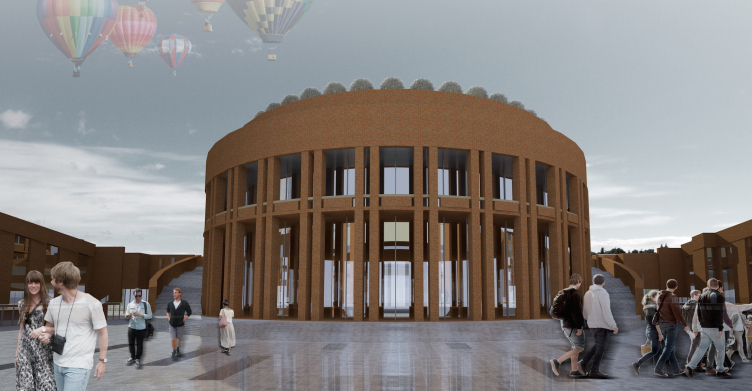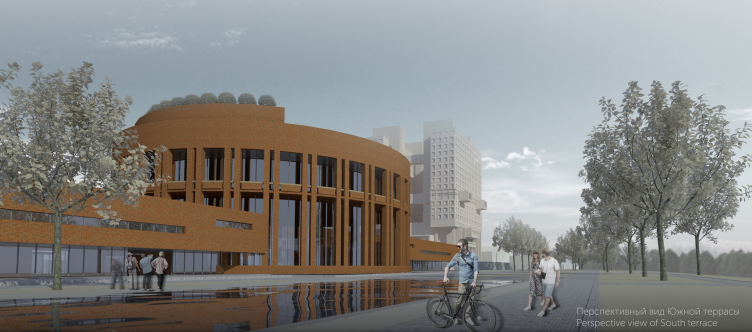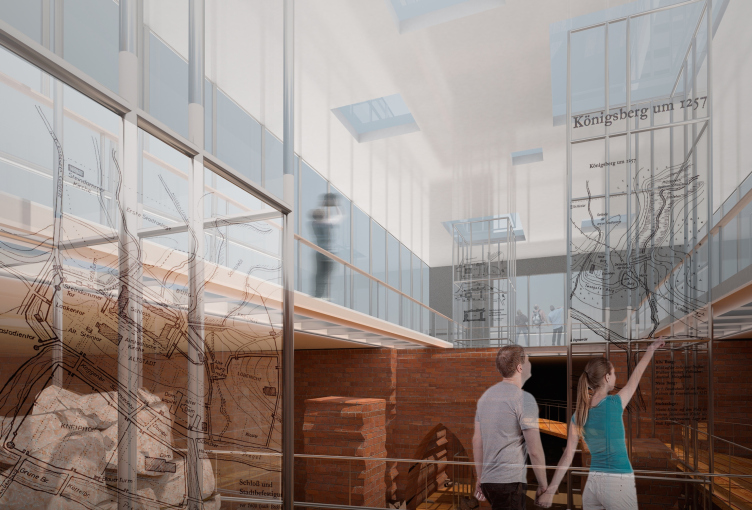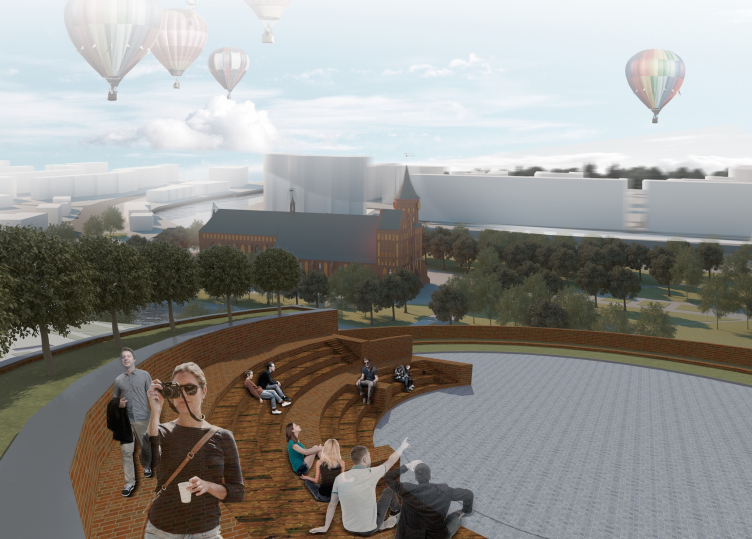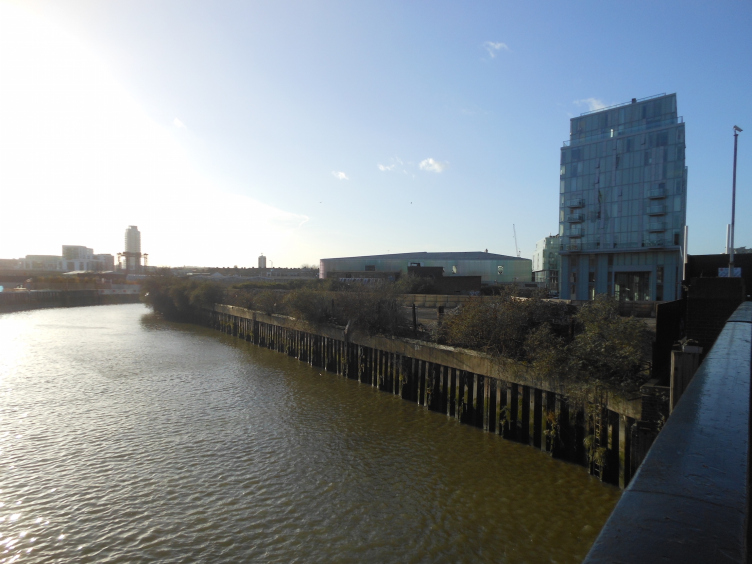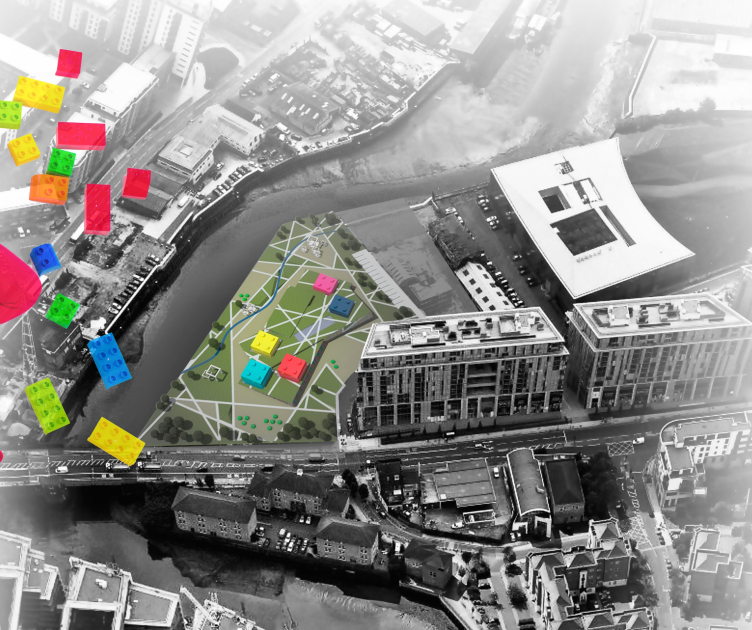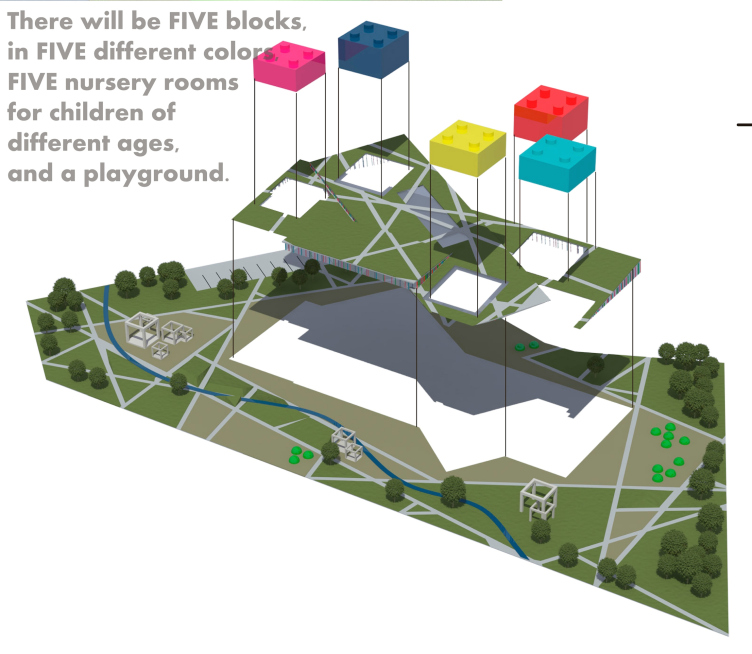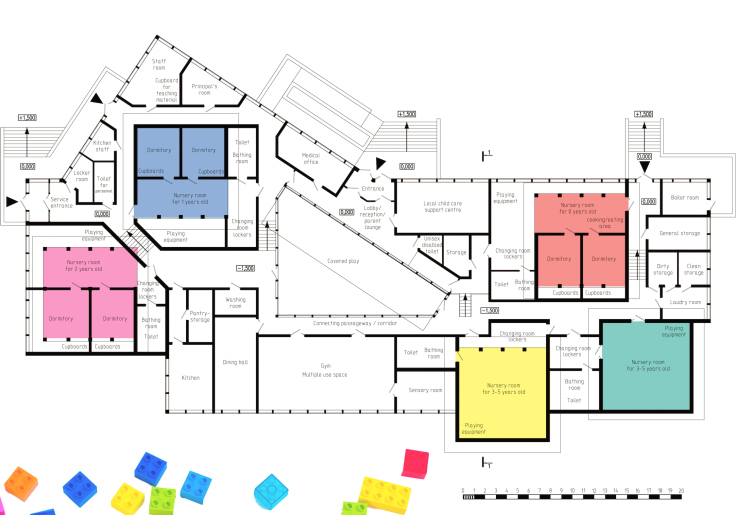For example, the leader of his company Anatoly Stolyarchuk successfully combines his "put-food-on-the-table" work with contest initiatives of his young creative talent. And, although it is always a great risk of getting a negative return on investment, you can by no means describe this work as detrimental: this is exactly where your young talent base grows and matures. In this article, we are bringing to your attention two contest projects done by Anatoliy Stolyarchuk studio in the recent months.
One of them was prepared for Kaliningrad, the city that in September of 2015 hosted an open architectural competition named "Heart of the City" for the best concept of the historical, cultural, and governmental complex. The contest was organized by the non-profit partnership «Town-planning Bureau "Heart of the City"» that acted upon the commission of the government of the Kaliningrad region supported by the city administration.
The other contest - London Nursery a School - took place in December in London. It was organized by a privately owned Italian company "AWR Competetions".
***
The project of the governmental, historical, and cultural complex in Kaliningrad
The designed land site is located next to Kaliningrad's historical center, the contest for the best development project of which was won in 2014 by "Studio-44". The status of the land site in question is still more "high-responsibility" because it is exactly here that the old Koenigsberg Castle of the XIII-XIX centuries used to be situated. In other words, it is indeed the heart of the city. During the World War II, the castle suffered a lot of damage, although its walls and towers survived. Nevertheless, in the sixties, the city council made a decision to take them down, in spite of the protests of the city conservation activists. Next to the wasteland that conceals the basements of the castle, in the seventies, the construction of the "House of Soviets" was started - this building was to become the city's new centerpiece instead of the lost castle. As it turned out in the long run, however, the building became for the city people a symbol of delayed construction, incomplete up to the present day, and without any clear prospects for the future.
According to the contest task, it was up to the contestants to decide on the fate of the "House of Soviets", as well as on the question of recreating/not recreating the castle in its original form. One way or another, this place was supposed to get a residence of the city council, plus a historical and cultural complex. From the very start, Anatoliy Stolyarchuk Studio decisively discarded the idea of a "mock-up" recreation of the castle: instead, the authors proposed a building that follows the irregular outline of the inside perimeter of the castle but on the outside takes on an aspect of a regular square.
A project of historical and cultural center in Kaliningrad. Location plan. Project, 2015 © Anatoly Stolyarchuk Architectural Studio
A project of historical and cultural center in Kaliningrad. Bird's eye view. Project, 2015 © Anatoly Stolyarchuk Architectural Studio
A massive rectangle is cut off on top in a slanted line in the direction of the south terrace and the Island of Kant; into its bottommost part, exactly along the central axis, the architects cut a monumental cylindrical volume with a conference hall and an open-air amphitheater on the roof.
A project of historical and cultural center in Kaliningrad. Bird's eye view. Project, 2015 © Anatoly Stolyarchuk Architectural Studio
A project of historical and cultural center in Kaliningrad. Project, 2015 © Anatoly Stolyarchuk Architectural Studio
A project of historical and cultural center in Kaliningrad. View of the South Terrace. Project, 2015 © Anatoly Stolyarchuk Architectural Studio
The main entrance to the complex (executed in the form of a broad arch) is located on one of Kaliningrad's key streets - Ulitsa Shevchenko. Entering it, the visitor finds himself in a sunken-in space of the museum lobby, getting immediately involved in the live contact with the artifacts of the Teutonic Order castle. From this point, one can get up to each of the four floors, as well as to the green landscaped roof. Ascending to the "mark zero", the visitor can get inside the "Heart of the City" pavilion, an open-air museum where one can get acquainted with the archeological findings of the castle, as well as get to the tourist information center, souvenir stores, restaurants and cafes. This place also includes the management office of the complex and the municipal hybrid library. All the functional zones have independent entrances either from the outside or from the inside yard.
A project of historical and cultural center in Kaliningrad. Interior of the museum. Project, 2015 © Anatoly Stolyarchuk Architectural Studio
The second floor (+6.000) will be predominantly occupied by the governor's residence. This place will include his office, an official negotiations room, a conference hall, an awarding hall, administrative premises, as well as the educational center and the Museum of the history of the king's castle.
A project of historical and cultural center in Kaliningrad. The inside of the multifuctional hall. Project, 2015 © Anatoly Stolyarchuk Architectural Studio
The third floor (+12.000) hosts the temporary expositions and the Museum of Rarities. The fourth level (+18.000) is in fact a usable roof with restaurants and a public recreation area that includes sightseeing platforms from which "cyberspace" guided tours into the past will be organized. Here the visitors will see a virtual 3D model of the Koenigsberg Castle, recreated by the drawings of the German architect Friedrich Lars - it will be possible to examine this model from various points on the roof by using special optical devices.
A project of historical and cultural center in Kaliningrad. Project, 2015 © Anatoly Stolyarchuk Architectural Studio
The square-shaped composition, the central "citadel tower", the red-brick colors - all this refers us to a generalized image of a medieval castle. At the same time, because it was decided that the House of Soviets would not be taken down, the "Post-Castle" also got some features of the late-soviet style: the grand monumentality, rigorous symmetry, and austere laconism. Finally, a "friendly contemporary" level stands towering above all this - the green roof turned into a sightseeing platform, the laser shows in the yard, the glass walls and the inserts in the yard pavement that open the remains of the old basements that are now part of the museum exposition.
This contest project made the top-ten list. It must be said that most of the finalists took the path or more or less accurate recreation of the historical castle. Of course, both of the approaches have the right to exist but, as Nina Landysheva, the chief architect of the project, stressed, the author team is completely unanimous on this point: the studio has been looking for ways to start a dialogue with the past without copying it verbatim.
A project of historical and cultural center in Kaliningrad. Plans of the floors. Project, 2015 © Anatoly Stolyarchuk Architectural Studio
A project of historical and cultural center in Kaliningrad. Plan of functional zones. Project, 2015 © Anatoly Stolyarchuk Architectural Studio
A project of historical and cultural center in Kaliningrad. Facades. Project, 2015 © Anatoly Stolyarchuk Architectural Studio
A project of historical and cultural center in Kaliningrad. Facades. Project, 2015 © Anatoly Stolyarchuk Architectural Studio
***
Nursery school on the bank of the Deptford Canal in LondonYet another contest project was developed for a picturesque place in a former industrial park in London. The construction site looks a bit like a cape, bordering on one side on a flyover, and on the other side - on the Deptford Canal. Fragments of high-quality living environment alternate here with wastelands, garages, and squatter parking lots.
Nursery school in London. The current situation. Project, 2015 © 2010-2015 AWR – Architecture Workshop in Rome
Right next to it is the modern apartment complex "Creekside Village" and the dance and music college "Trinity Laban", a work of Herzog & de Meuron that won its authors a Pritzker Prize in 2001. Not far away the Greenwich Park with its famous observatory is situated. This place is an interesting and promising one, related to history but at the same time devoid of any historical architectural context of its own.
Nursery school in London. The current situation. Project, 2015 © 2010-2015 AWR – Architecture Workshop in Rome
In these conditions, the authors set before themselves a task of tying in the principles of green architecture with their own vision of how a modern playground should look like in a large modern city. As Nina Landysheva shares, the prime vision was that of a bunch of Lego cubes scattered around in the grass. This is how the idea came about of five independent differently colored pavilions with upper-tier lights for the children of all ages to play in. The playground that connects them is cut by straight trails crossing at various angles. But this playground is not just any playground - it is a green roof that covers the zero level of the complex.
Nursery school in London. Location plan. Project, 2015 © Anatoly Stolyarchuk Architectural Studio
Nursery school in London. Location plan. Project, 2015 © Anatoly Stolyarchuk Architectural Studio
Nursery school in London. The plan of locating the units. Project, 2015 © Anatoly Stolyarchuk Architectural Studio
The latter is in fact a large public zone that includes a lobby, administration offices, a medical service room, a conference hall, bedrooms, and a large multifunctional space of the cafeteria that also includes a kitchen, a laundromat, a storage facility, and a staff room.
Nursery school in London. View of the playground. Project, 2015 © Anatoly Stolyarchuk Architectural Studio
Nursery school in London. Open-air park zones. Project, 2015 © Anatoly Stolyarchuk Architectural Studio
Nursery school in London. Plan. Project, 2015 © Anatoly Stolyarchuk Architectural Studio
Nursery school in London. Section view. Project, 2015 © Anatoly Stolyarchuk Architectural Studio
The large multicolored window of the children's cafeteria commands a fine view of the Deptford Canal. In the very heart of the complex, there is a common-access playroom with a glass roof where kids from all the groups can play together. The main entrance is situated on the side of the college and Laban Walk Road - which also continues the theme of upbringing and education. This project did not get shortlisted as the prize-winning one but it still gave its young authors a European contest experience that we hope will be useful for them in the future.
